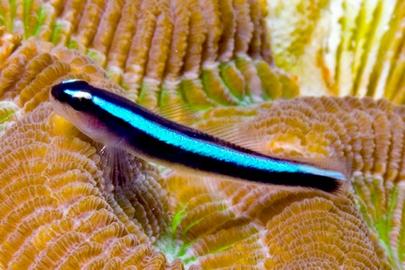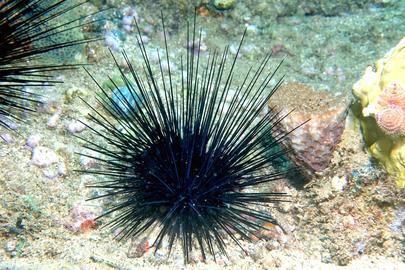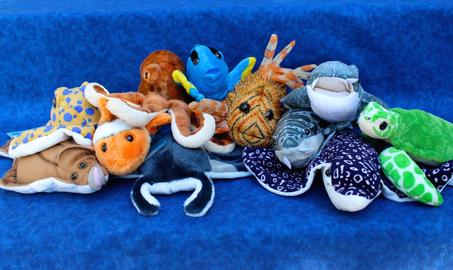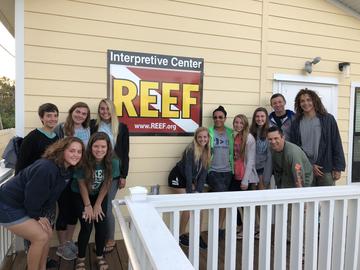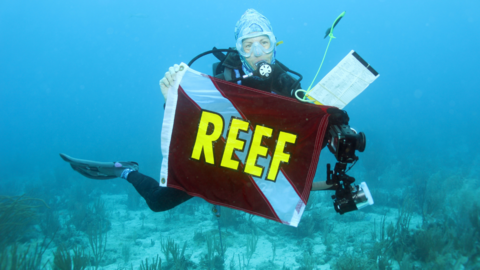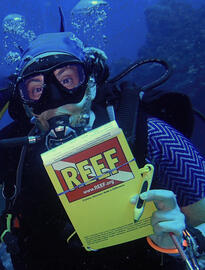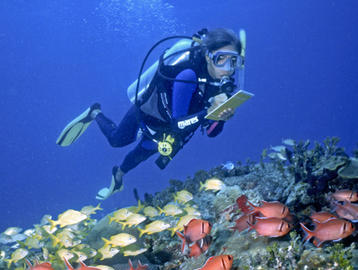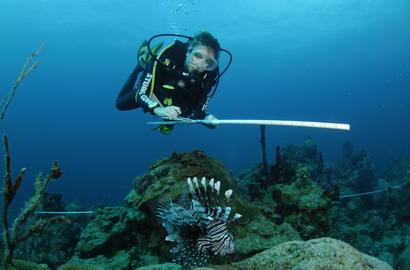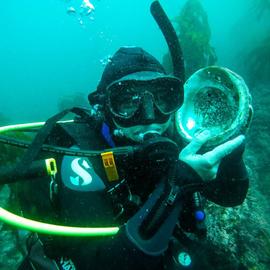Current search
Search found 195 items
- tropical western atlantic
- (-) Remove e-News article filter e-News article
Attention Tropical Western Atlantic fishwatchers -- the Neon Goby has been split into two species. The original Neon Goby, Elactinus oceanops, retains the common name and is geographically known only from So. Florida and Flower Gardens and Alacran reefs in the Gulf of Mexico. This goby can be distinguished by the bright neon blue stripe from snout to tail with a sharp blue-against-black edge.
In response to requests from the scientific community, we are adding a new species to monitor on REEF surveys in the Tropical Western Atlantic (TWA) - Diadema antillarum, the Long-Spined Sea Urchin. In the early 1980s, a large die-off of Diadema occurred throughout the TWA. This has had a significant and long-lasting impact on coral reefs in the region because Diadema is (was) one of the primary grazers on Caribbean coral reefs (keeping rocks clear for baby corals to establish and keeping algae from overgrowing established corals).
REEF Conservation Creatures are iconic marine species found throughout REEF’s nine Volunteer Fish Survey Project regions. From the Tropical Western Atlantic (TWA) to the Central Indo-Pacific (CIP), these marine creatures highlight the diversity of ocean ecosystems and encourage understanding and respect for marine life. Each plush comes with a collectable, laminated Conservation Card that provides information about the animal’s habitat, characteristics, potential threats, and global distribution in REEF's Survey Project regions.
Last month, REEF’s Explorers Education Program had the pleasure of working with two collegiate groups in Key Largo, Florida. Each group of students spent one fun-filled week working alongside REEF staff and interns to learn about TWA (Tropical Western Atlantic) fish identification and the REEF survey method. The first group was nine students from Georgia State University, accompanied by their professor, Dr. Amy Reber. This weeklong education program has become an annual component of Georgia State's marine ecology course.
This year we are celebrating the 30th anniversary of the REEF Volunteer Fish Survey Project (VFSP). We are amazed and in awe of how the program has grown, and are so grateful to the over 17,000 volunteers who have conducted surveys through the years. The first surveys were conducted in July 1993 in Key Largo, FL. Since then, the VFSP has been expanded to waters around the world and has been modified to include invertebrates and algae in colder temperate waters. The database is approaching 300,000 surveys!
REEF members are the heart of our grassroots marine conservation programs. A diverse community of divers, snorkelers, and ocean enthusiasts support our mission to conserve marine environments worldwide.
Earlier this week, on March 3rd, 2009, the number of REEF surveys conducted by volunteers in the Tropical Western Atlantic (TWA) region (incl. the US East Coast, Caribbean, Bahamas, Gulf of Mexico) topped 100,000! The REEF Volunteer Survey Project database as a whole (including all regions) reached this benchmark in October 2006. The 100k surveys have been conducted by 8,582 volunteers at 6,203 sites in the TWA region.
Calling all college students or recent graduates who are divers! This summer, spend a week learning marine life survey techniques with REEF experts in Key Largo, Florida. Build your skills and resume for marine field research and discover career opportunities in the marine and conservation field. The course covers commonly used tools and techniques utilized in visual assessments of reef fishes.
REEF members are the heart of our grassroots marine conservation programs. A diverse community of divers, snorkelers, and ocean enthusiasts support our mission to conserve marine environments worldwide.


